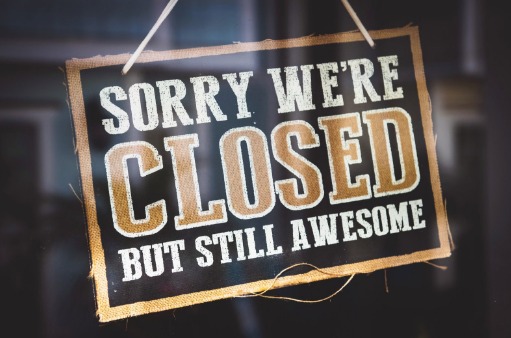Open or closed? How to make a decision to weather the winter.

It’s not an open and shut case. How to make a decision to weather the winter.
Pamela Palmieri has owned and operated Reid’s Pub since 1982. When covid hit, she was in an enviable position: she outright owns the building, so her overhead is manageable. She could weather the several months closure.
When the state eased the restrictions on indoor dining, she had to decide whether or not it was worth it. She had so many conflicting considerations:
- She’s concerned about her employees and their wellbeing. On the one hand, she wants to ensure they’re health and safety. On the other hand, they need and want to work.
- Financially, she can afford to stay closed for the duration of the pandemic. But if she stays closed, will her customers forget about her; and when she eventually reopens, will she have lost her loyal following.
Pamela is not alone in these concerns. In the last several weeks, I’ve talked with many entrepreneurs asking some variation of the same questions. Does it make sense to open (and stay open)? Is the new business model viable? Can I make it work??
Naomi Lane was in a different situation, but with the same question: Can I make it work?? She opened for the summer, able to capitalize on the outdoor dining. With the cooler weather settling in, she knows that the number of customers she’ll have, along with the sales, will go down. Can she afford to stay open through the winter?
Many factors weigh into the decision making, some more subjective than others. But having a strong understanding of the objective factors can help in the process. The objective factors are the numbers. If the numbers add up, then you can decide – what’s best for your staff and community? If the numbers don’t add up, then you need to decide what’s next.
For both Pamela and Naomi, the process of evaluating the numbers is the same.
Step 1:
Organize your expenses into 3 categories:
- Sunk Cost: Regardless of whether you open or not, you will have these expenses. This includes rent, basic utilities and insurance.
- Costs to open: The minute you decide to open your doors, regardless of whether customers walk in, you begin to incur new expenses. For restaurants and retail stores, you pay your staff regardless of whether you have customers. Your electric bill goes up from the basic turning on the lights, to running the A/C to operating the refrigerators.
While payroll is traditionally considered a variable cost – the more sales you have, the more staff you hire; it is considered fixed in this case. You need a set number of employees regardless of sales volume. Part of the question is: what level of sales do you need to support the base level of employees?
- Variable Costs: Once you decide to open, these expenses will increase as you have more customers. For restaurants, this is primarily food, kitchen supplies, linens and paper goods. Consider what the variable cost is as a percentage of sales. As an example, if you sell a $10 sandwich, how much do you spend on the ingredients and the paper goods to serve the sandwich. Let’s say it’s $2.50. Your variable costs are 25% ($2.50/$10.00)
Step 2: Calculate Your Breakeven Sales
If you’ve watched my webinars and taken my course on breakeven, we think about it in a more general business sense. What do you need to do to make it work? In this case, we’ve isolated the numbers into a more specific question: does it make sense to open the doors?
In this case, you want to calculate breakeven sales to cover the opening costs, and have a little extra to contribute to the sunk/overhead costs.
The breakeven sales = (The Cost to Open)/(1-variable costs).
Naomi’s monthly payroll is $30,000. Her other costs associated with opening are $5,000 per month. In addition, her production cost has typically been about 45%. Her breakeven sales $63,636.
$63,636 = $35,000/(1-.45)
If she opens 28 days per month, then average daily sales need to exceed $2,273 just to cover the costs of opening.
Obviously, there are more considerations than just can she meet this sales target. But armed with this information, she’s better positioned to decide if she should stay open through the winter.
Have questions about how break-even can help you clarify your decisions? Drop us a line.
